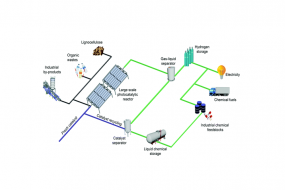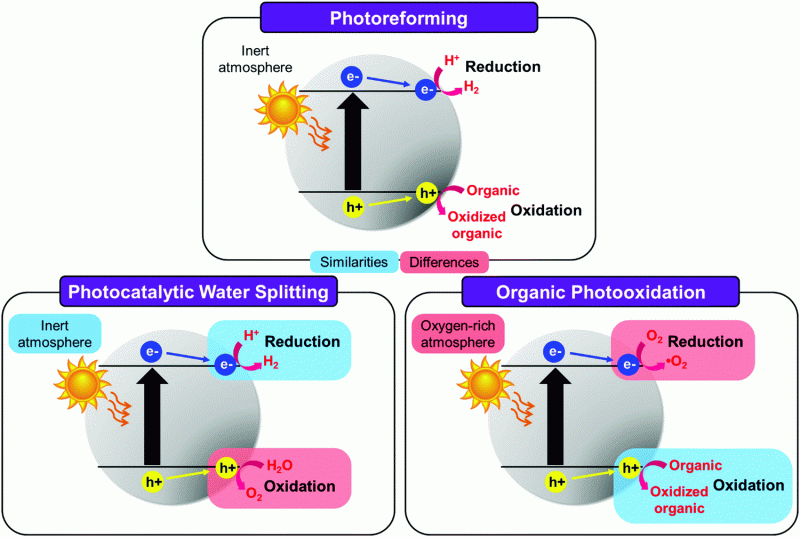In a newly published review article in Energy and Environmental Science, our group appraises recent literature and provides guidelines for the rational design of promising photocatalysts, as well as optimization of reactor design and operating conditions of selective photoreforming reaction.
But what is photoreforming? It is a process that harnesses the redox ability of photocatalysts upon illumination, to simultaneously drive the reduction of H+ into hydrogen gas and oxidation of organic compounds. The benefits of photoreforming when compared to photocatalytic water splitting include: (i) less energetically demanding reactions replace the sluggish oxygen evolution reaction enabling a higher hydrogen evolution efficiency; (ii) organic waste/biomass is utilized; (iii) waste is converted into valuable organics or other benign waste products; and (iv) the H2 and O2 back reaction during photocatalytic water splitting is prevented.
This paper also highlight the importance of employing various dynamic material characterisation techniques for a comprehensive understanding of the structure–mechanism–function relationship. A holistic strategy that encompasses machine learning and theoretical calculations for photocatalyst design is definitely required to further advance the field of photoreforming process.
Read full paper on Energy and Environmental Science, 2021 (advance article) (https://doi.org/10.1039/D0EE03116J)

Schematic depicting the selective photoreforming process where organic wastes are converted into hydrogen fuels, valuable organic feedstocks and chemical fuels.
